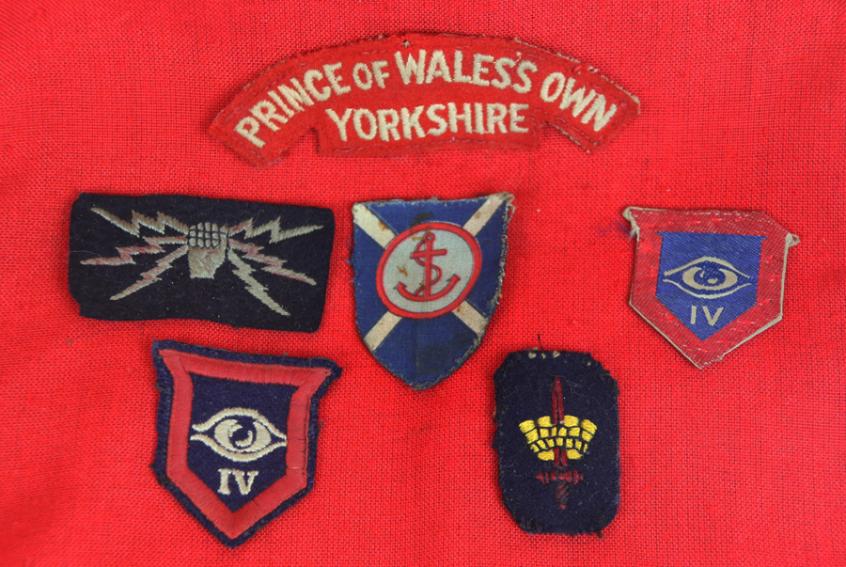Original Uniform Removed British Formation Badges 1939-1945 & King George VIth
An embroidered cloth shoulder title for the Prince of Wales's Own Regiment of Yorkshire, comprising a base of scarlet wool cut in an arc and embroidered on obverse with the title of the regiment "PRINCE OF WALES'S OWN YORKSHIRE" in white thread, and 5 formation badges, including the 4th Guards Armoured. Formation signs were first used by the British Army in WW1 in order to provide an easy method of visual identification of the various units. They were worn on the upper sleeve in pairs, on epaulets, on head gear, painted on unit vehicles, and used on road signs. It was also quickly found that the signs created a morale boosting esprit de corps as each unit became proud of its own symbol. After WW1 the use of formation signs was discontinued, they were reintroduced at the outbreak of WW2.Divisional Signs were reintroduced early in 1940, but instructions were given in 1941 for all formation signs to be referred to as Formation Badges; the official American designation is Shoulder Sleeve Insignia. Formation badges were worn on the sleeves of uniforms except on greatcoats; in battledress, one inch below the regimental or corps shoulder title, and immediately above the arm of service strip. These were narrow two inch strips, introduced in the autumn of 1940, which gave the soldier's arm of service when wearing a steel helmet, or no cap or other distinguishing badges. Infantry battalions wore one, two, or three red strips one below the other, as in the above illustration, to indicate the brigade to which they belonged as shown here.
In tropical kit areas, such as the Middle East and Far East, the formation badges were often worn affixed to the sleeves of Kahki Drill jackets by means of press studs to facilitate laundering, or even worn stitched onto slip-on epaulettes for wearing on the shoulders of K.D, shirts; this was also the method used in the hot summer months in Italy.
On all vehicles, formation badges were stencilled in colour on the forward and rear mudguards, or on the tailboard of trucks; on jeeps the badge appeared on the body below the windscreen on the driver's side.
Officially all formation badges, and other identifying insignia such as regimental titles, were to be removed before going into battle; however, photographic evidence clearly shows that every degree of obedience to this was to be seen in Normandy, and to some extent in Italy, from completely stripped sleeve and vehicle insignia to total disregard of the order. Guards 4th armoured. london district southern commanded
Code: 23864
120.00 GBP

